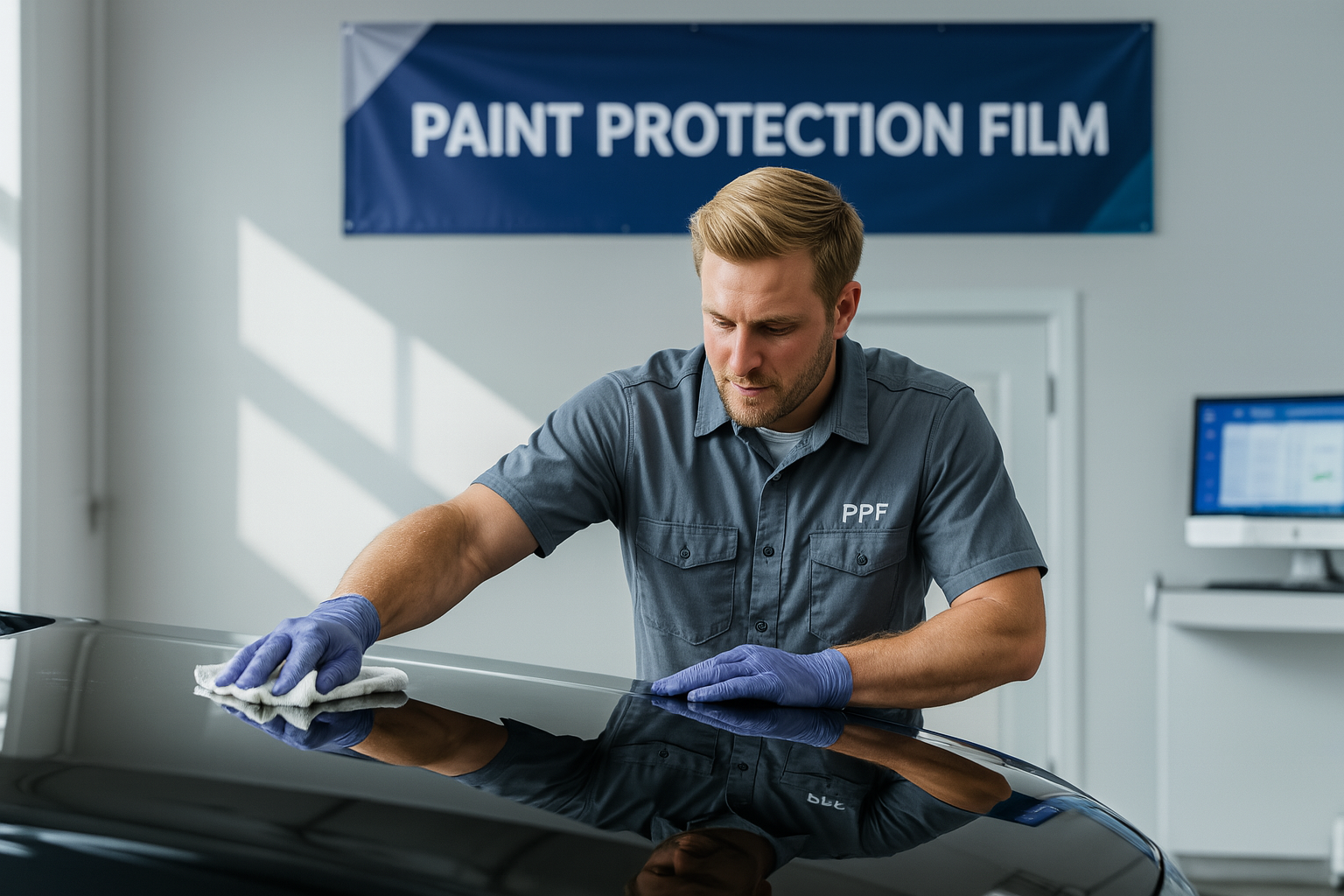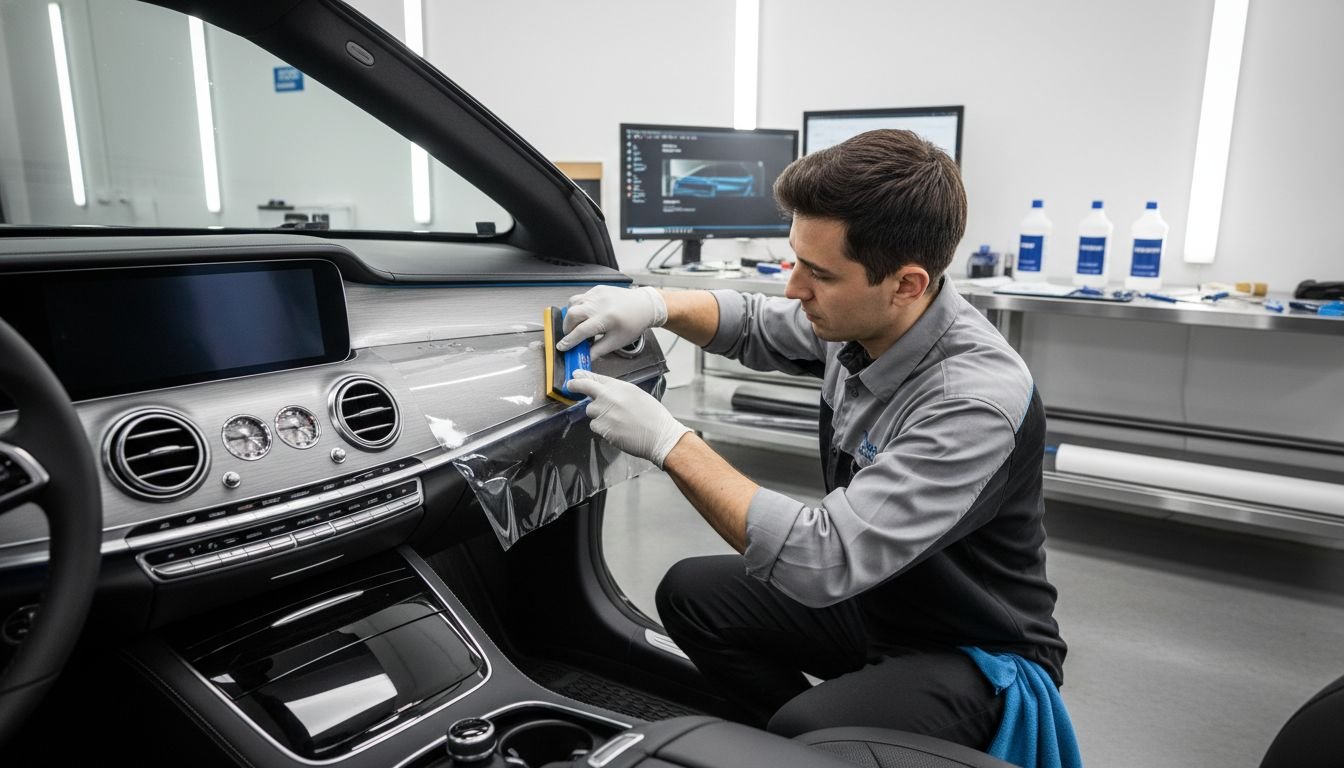

Window tint might look simple, but its hidden science goes much deeper than appearance. Here is the surprise. Some professional window tints can cut energy costs by up to 30 percent and block up to 99 percent of harmful UV rays. That means window tint is not just about style or privacy. It is actually a clever bit of engineering that turns plain glass into a smart shield, delivering real-world benefits that most drivers and building owners never even notice.
Table of Contents
- Understanding What Is Window Tint
- Key Types Of Window Tint Film
- Benefits Of Window Tint For Professionals
- Window Tint Installation Best Practices
Quick Summary
| Takeaway | Explanation |
|---|---|
| Understanding Window Tint | Window tint is a multi-layered film, primarily made of PET, designed to control light transmission and offer benefits like UV blocking and heat rejection. Professional installers must choose the right type to balance aesthetic desires with functional needs. |
| Types of Window Tint Film | Different tint films vary in performance; dyed films are economical but less durable, while metallic and ceramic films provide superior heat reflection and UV protection, with ceramic films maintaining electronic signal integrity. Hybrid and specialized films are available for specific applications. |
| Benefits of Window Tint | Window tints enhance energy efficiency by reducing cooling costs, offer UV protection for interior surfaces, and improve safety through enhanced glass integrity. They also help reduce glare, promoting comfort in various environments. |
| Installation Best Practices | Proper surface preparation, control of environmental conditions, precision cutting, and thorough application techniques are critical for successful installations. Ongoing quality control and client education on maintenance further ensure long-term performance. |
Understanding What is Window Tint
Window tint represents a specialized film technology applied to glass surfaces, primarily in automotive contexts, designed to modify light transmission and provide multiple functional benefits. Research published in Analytical Methods reveals that window tinting involves applying a thin laminate film, typically constructed from polyethylene terephthalate (PET), which can effectively control radiation entering through windows.
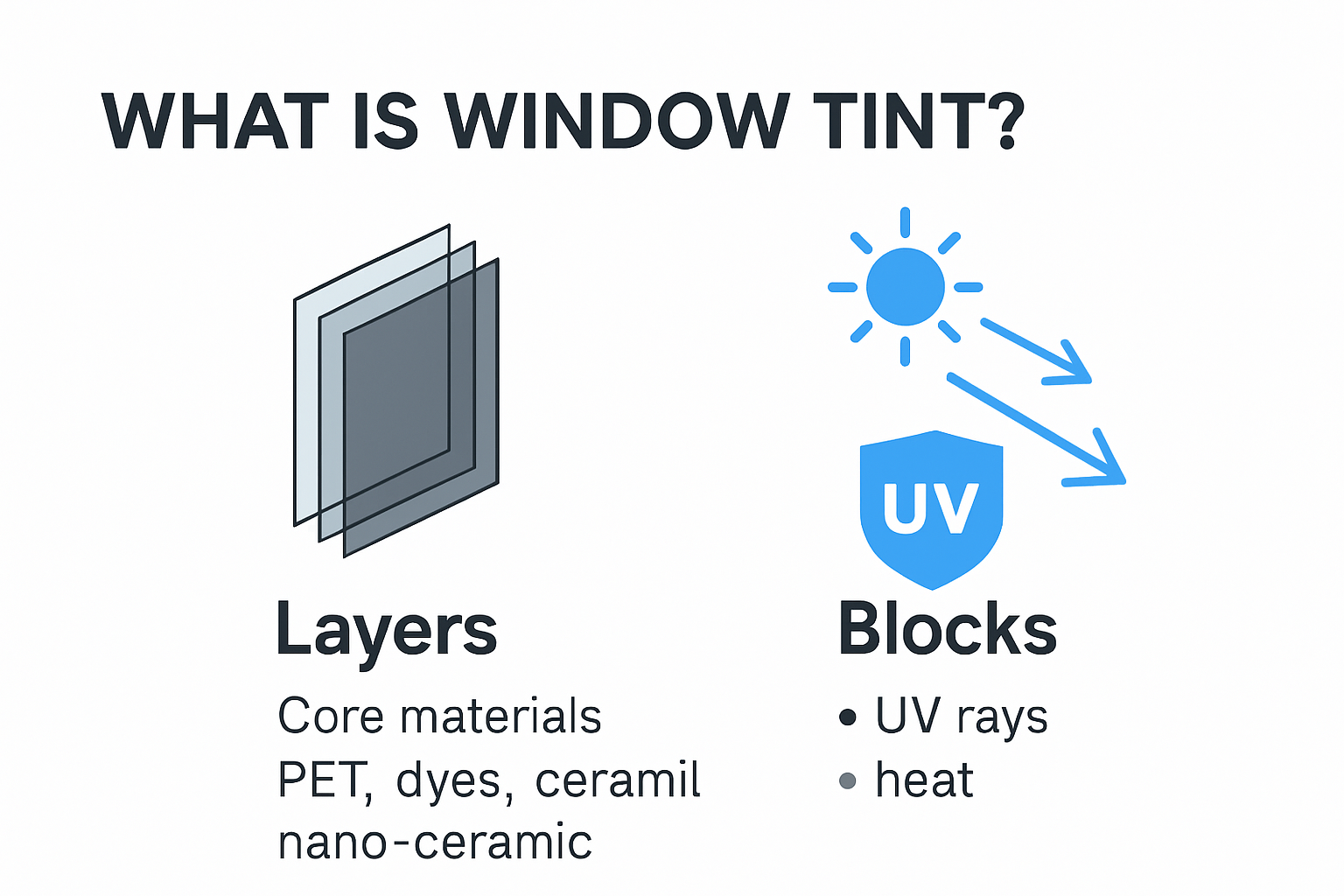
The Fundamental Composition of Window Tint
At its core, window tint is a multilayered material engineered to interact with different light spectrums. Professional installers understand that these films are not merely decorative but serve critical protective functions. The primary materials used in window tint manufacturing include polyester base layers embedded with specialized compounds like dyes, metals, ceramics, or nano-ceramic particles. These materials determine the film’s performance characteristics such as heat rejection, UV blocking, and visible light transmission.
According to automotive ergonomics research, window tints can significantly impact visual perception, with variations in light transmittance potentially affecting driver visibility and safety. Professional installers must carefully select tint types that balance aesthetic preferences with functional requirements.
Performance and Technical Considerations
Window tint performance is measured through several key metrics that professional installers must comprehend. Visible Light Transmission (VLT) percentage indicates how much light passes through the tinted surface, while total solar energy rejection (TSER) measures the film’s capacity to block infrared and ultraviolet radiation. Explore our comprehensive guide on window tint technologies to understand the nuanced characteristics of different film compositions.
Professional tint installers recognize that modern window films go beyond simple sun protection. They represent sophisticated engineering solutions designed to enhance vehicle comfort, protect interior surfaces from UV degradation, improve energy efficiency, and provide additional privacy. The selection of an appropriate window tint involves understanding substrate compatibility, environmental conditions, legal regulations, and specific client requirements.
Ultimately, window tint is not just a product but a precision-engineered solution that transforms glass surfaces into intelligent barriers controlling light, heat, and radiation transmission. Professional installers must approach each application with technical expertise, understanding that the right window tint can dramatically improve a vehicle’s functionality, aesthetic appeal, and occupant comfort.
Key Types of Window Tint Film
Professional window tint installers must understand the nuanced characteristics of different film technologies to deliver optimal solutions for their clients. Research from window tinting experts reveals four primary categories of window tint films, each with unique performance attributes and applications.
Here is a comparison table summarising the main types of window tint film and their core characteristics, as presented in the article:
| Tint Film Type | Composition | Key Benefits | Typical Limitations |
|---|---|---|---|
| Dyed | PET layer with dyed compounds | Cost-effective, reduces glare, basic heat rejection | Fades over time, lower durability/heat block |
| Metallic | PET layer with metallic particles | Superior heat/UV rejection, shatter resistance | Can interfere with electronic signals |
| Ceramic | PET layer with ceramic nanotechnology | Excellent heat/UV block, preserves signal clarity | Higher cost |
| Hybrid/Specialised | Blend of dyed, metallic, ceramic | Custom performance for specific needs | Cost and specificity vary |
Dyed Window Tint Films
Dyed window tint films represent the most basic and economical film technology. According to scientific analysis, these films involve a clear polyethylene terephthalate (PET) layer immersed in specialized dye baths to achieve desired tint intensities. Professional installers recognize these films as cost-effective solutions that absorb infrared and visible radiation, reducing interior heat and glare. However, dyed films have limitations in long-term durability and heat rejection compared to more advanced technologies.
Metallic and Ceramic Window Tint Technologies
Metallic window tint films incorporate microscopic metallic particles designed to reflect heat and ultraviolet rays. Research indicates these films provide superior heat reduction and enhanced shatter resistance. However, they present a significant drawback: potential interference with electronic signals like GPS and cellular communications.
Ceramic window tint films emerge as a more sophisticated alternative. Explore our comprehensive guide on advanced tinting technologies to understand their revolutionary performance. These films utilize advanced ceramic nanotechnology to deliver exceptional heat rejection, UV protection, and glare reduction without compromising electronic signal integrity. Professional installers appreciate ceramic films for their superior optical clarity, durability, and performance across diverse environmental conditions.
Hybrid and Specialized Window Tint Films
Beyond traditional categories, hybrid window tint films combine multiple technologies to optimize performance. These innovative solutions blend dyed, metallic, and ceramic elements to create multifunctional films addressing specific client requirements. Professional installers can select hybrid films offering enhanced thermal regulation, improved aesthetic appeal, and targeted performance characteristics.
Specialized window tint films further expand the technological landscape. Some films incorporate advanced nano-ceramic particles, while others feature multi-layered constructions designed for specific applications like high-temperature environments, enhanced privacy, or specialized UV protection. The selection of an appropriate window tint film demands a comprehensive understanding of material science, client needs, and environmental factors.
Professional window tint installers must continually educate themselves on emerging film technologies, understanding that each film type represents a sophisticated engineering solution tailored to unique performance requirements. The right film can transform a vehicle’s comfort, efficiency, and aesthetic appeal.
Benefits of Window Tint for Professionals
Professional window tint installers understand that their services extend far beyond aesthetic modifications. Research from energy efficiency experts reveals that window tinting provides substantial functional benefits across multiple sectors, transforming vehicles, commercial spaces, and residential environments.
Below is a table that summarises the main benefits of window tinting for professional clients, according to the information in this section:
| Benefit Area | Professional Advantage |
|---|---|
| Energy Efficiency | Reduces solar heat transmission, lowering cooling costs by up to 30% |
| Thermal Regulation | Creates consistent interior temperatures, lessening HVAC strain |
| Interior Protection | Blocks up to 99% UV, prevents fading and damage to interiors and equipment |
| Safety & Shatter Resistance | Adds strength to glass, improves occupant protection in accidents |
| Privacy | Limits visibility without reducing natural light |
| Glare Reduction | Lessens eye strain, supports workplace productivity and comfort |
Energy Efficiency and Cost Reduction
Window tint technologies offer remarkable energy management capabilities. Studies indicate that professional-grade window films can reduce cooling costs by up to 30% by blocking solar heat transmission. This significant energy reduction translates directly into economic advantages for clients, making window tinting an attractive investment for businesses and vehicle owners seeking operational cost optimization.
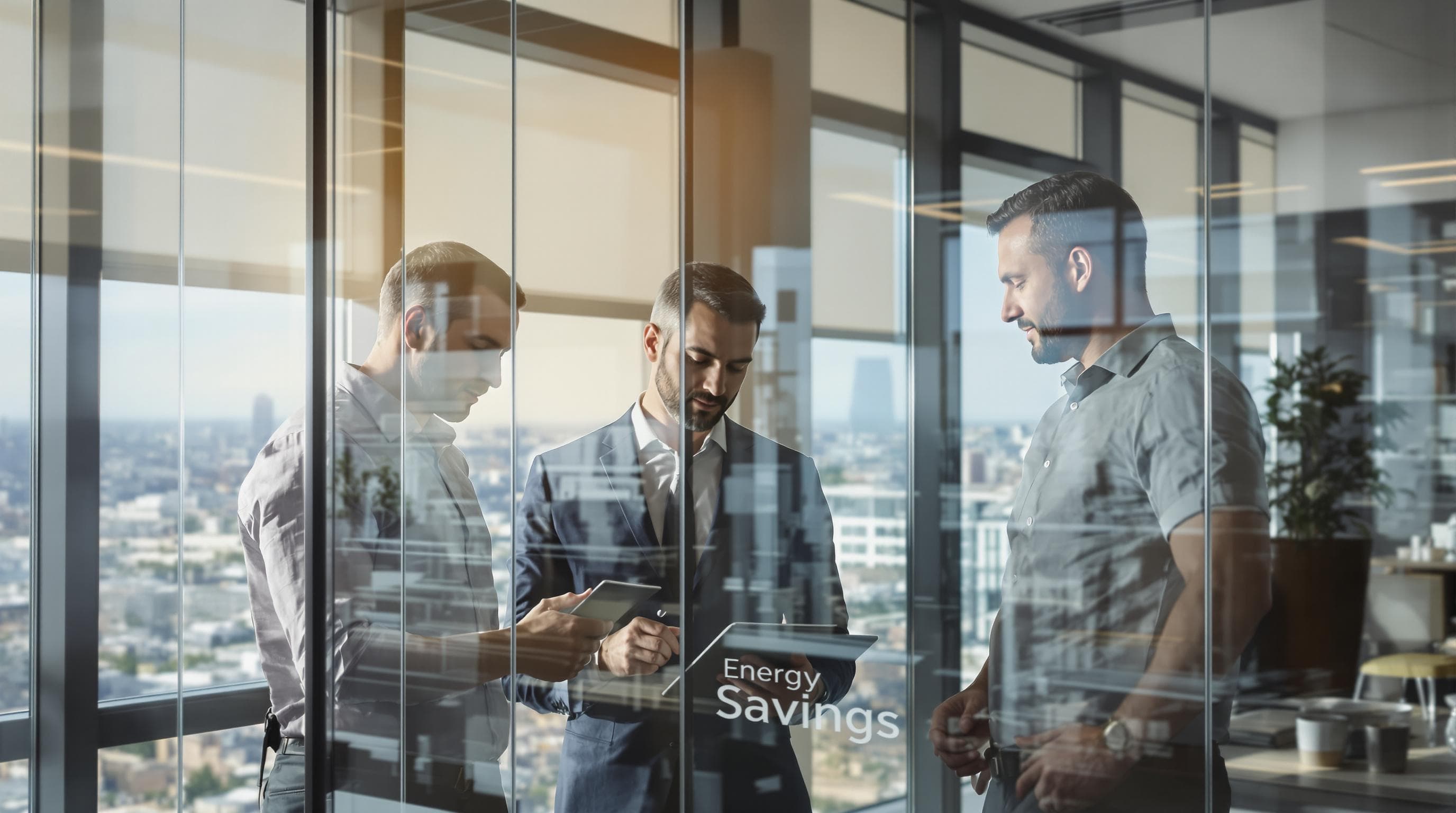
The thermal regulation properties of advanced window tints create a more consistent interior environment. By rejecting infrared radiation, these films maintain stable temperatures, reducing strain on HVAC systems and minimizing energy consumption. Professional installers recognize this as a compelling value proposition for environmentally conscious clients seeking sustainable solutions.
Interior Protection and Performance
Beyond thermal management, window tints provide comprehensive interior protection. Explore our professional guide on advanced tinting technologies to understand the protective capabilities of modern films. High-performance window tints block up to 99% of harmful ultraviolet rays, preventing interior surface degradation in vehicles, offices, and residential spaces.
For automotive professionals, this UV protection means preserving vehicle interiors. Leather seats, dashboard components, and electronic systems remain protected from sun-induced fading and material breakdown. Commercial clients benefit similarly, with window films safeguarding expensive office furnishings, artwork, and technological equipment from radiation damage.
Safety, Privacy, and Professional Applications
Window tint technologies deliver multifaceted safety and privacy benefits. Professional-grade films enhance glass structural integrity, providing an additional layer of protection against shattering. In automotive contexts, this translates to improved occupant safety during potential accidents. For commercial spaces, tinted windows create privacy barriers without compromising natural light transmission.
Additionally, window tints mitigate glare, which research demonstrates can significantly improve workplace productivity. By reducing eye strain and visual discomfort, professionally installed window films create more comfortable environments in offices, vehicles, and residential spaces.
Professional window tint installers are not merely applying a decorative film but delivering a sophisticated engineering solution. Each installation represents an opportunity to enhance client comfort, protect valuable assets, and optimize environmental performance. The advanced materials and precision application techniques transform window surfaces into intelligent, functional barriers that deliver measurable benefits across diverse professional applications.
Window Tint Installation Best Practices
Professional window tint installers understand that successful installation requires precision, technical expertise, and adherence to stringent quality standards. The International Window Film Association emphasizes that high-quality installation is as critical as the film technology itself, with visual and performance outcomes directly tied to professional techniques.
Surface Preparation and Environmental Considerations
Research from industry experts reveals that comprehensive surface preparation represents the foundational step in successful window tint application. Professional installers must meticulously clean window surfaces, removing all contaminants including dust, oils, and residual adhesives. This process involves using specialized cleaning solutions and lint-free cloths to ensure optimal film adhesion and prevent future imperfections.
Environmental conditions play a crucial role in installation success. Temperature and humidity significantly impact film application, with ideal installation environments typically ranging between 50-85 degrees Fahrenheit and maintaining moderate humidity levels. Installers must control workspace conditions to prevent moisture trapped between film and glass, which can lead to bubbling, peeling, and reduced film performance.
Precision Cutting and Application Techniques
Explore our comprehensive guide on advanced tinting technologies to understand the nuanced cutting techniques essential for professional installations. Precision cutting requires specialized tools and expertise, ensuring film fits seamlessly without excess material or misalignment. The National Fenestration Rating Council recommends using computer-aided cutting systems that provide micron-level accuracy, minimizing material waste and ensuring consistent, professional results.
Application techniques demand exceptional skill and patience. Professional installers use specialized squeegees and application solutions to eliminate air bubbles, ensuring smooth, uniform film coverage. The goal is achieving an installation where no imperfections are visible from six feet away in natural daylight, meeting the highest industry standards.
Quality Control and Long-Term Performance
Quality control extends beyond initial installation. Professional installers must educate clients about proper film maintenance, recommending specific cleaning techniques and avoiding actions that could compromise film integrity. This includes advising against using abrasive materials, harsh chemicals, and providing guidance on initial curing periods where minimal window interaction is recommended.
Advanced installers also understand the importance of warranties and performance documentation. By selecting high-quality films from reputable manufacturers and maintaining meticulous installation records, professionals can provide clients with confidence in their window tint investment. This approach transforms window tinting from a simple aesthetic enhancement to a comprehensive, value-added service.
Professional window tint installation is a sophisticated craft combining technical knowledge, precision tools, and refined skills. Successful installers continuously update their techniques, invest in advanced training, and maintain a commitment to delivering exceptional, long-lasting window tint solutions that exceed client expectations.
Frequently Asked Questions
What is window tint?
Window tint is a specialised film applied to glass surfaces, primarily in vehicles and buildings, designed to modify light transmission and offer benefits such as UV blocking and heat rejection.
What are the benefits of window tinting for professionals?
Window tinting enhances energy efficiency by reducing cooling costs, provides UV protection to interior surfaces, improves safety by reinforcing glass integrity, and adds privacy without sacrificing natural light.
What are the different types of window tint films available?
The main types of window tint films include dyed films, metallic films, ceramic films, and hybrid specialised films. Each type has unique performance characteristics, aesthetic qualities, and cost implications.
What are the best practices for window tint installation?
Successful window tint installation requires meticulous surface preparation, maintaining ideal environmental conditions, precision cutting, skilled application techniques, and implementing rigorous quality control measures to ensure long-term performance.
Turn Your Window Tint Expertise into Results With Advanced Software
You understand that perfect window tinting is far more than selecting the right film. The true challenge is achieving flawless installation with absolute accuracy. The article revealed how small mistakes in cutting or alignment directly affect both performance and client satisfaction. If you are serious about boosting quality and cutting down waste, you need tools designed for professionals.
Discover our powerful window tint solutions at AEONCUT, made specifically to address the common pain points of tint installers. Our pre-cut software uses a massive pattern library, smart auto-nesting, and cloud-based updates, so you deliver consistent results quickly and confidently every time.
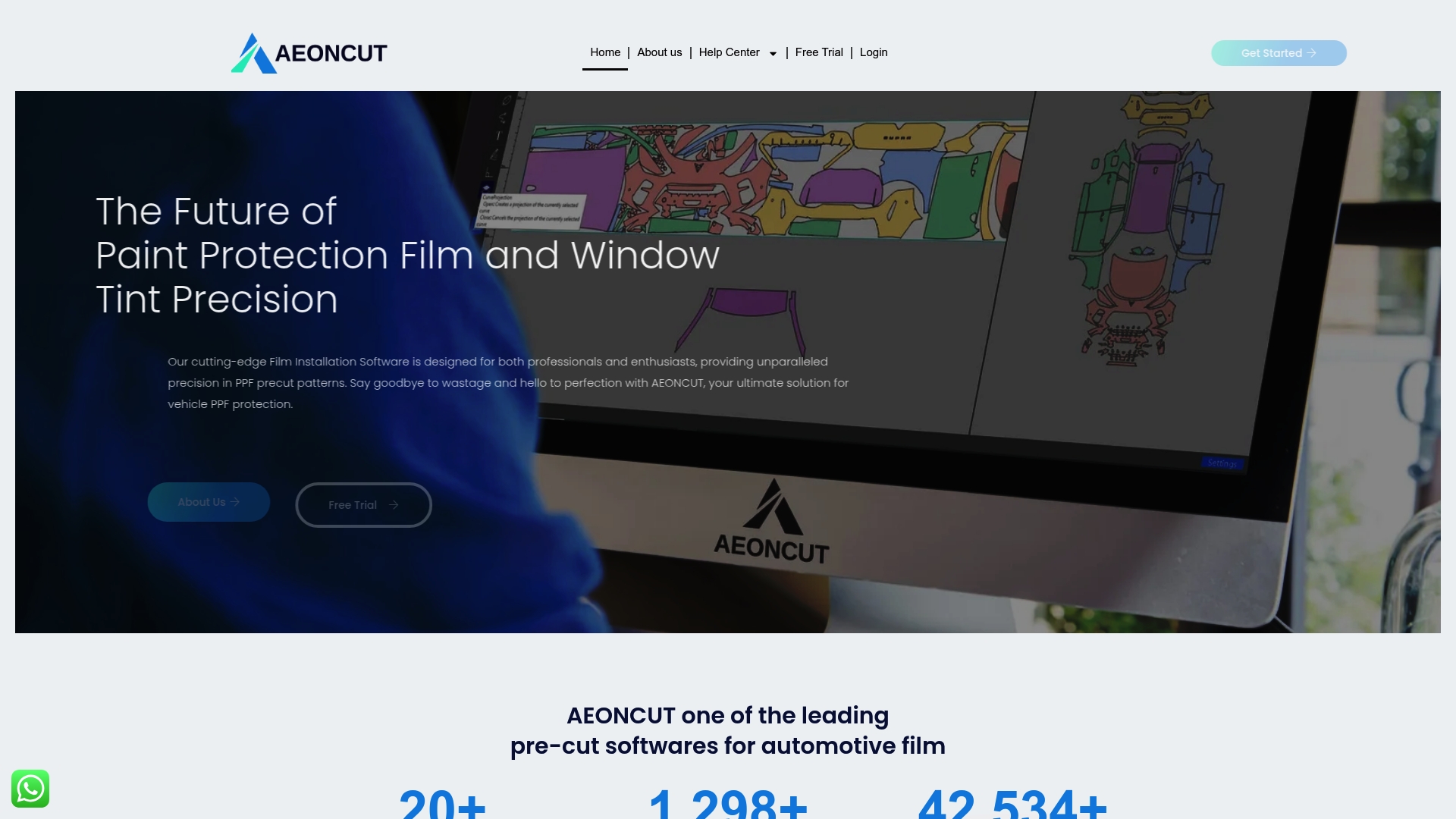
Transform your workflow and maximise your profit. Take a look at https://aeoncutsw.com to see how our technology turns expert knowledge into peak performance. Start now and join the professionals who already trust our cutting-edge platform.
Recommended
- Types of Window Tint: Guide for Installers and Dealers 2025 – AEONCUT PPF Pre-cut Cutting software
- window Tint – AEONCUT PPF Pre-cut Cutting software
- Top Paint Protection Film Benefits for Auto Professionals 2025 – AEONCUT PPF Pre-cut Cutting software
- PPF for Motorcycles: 2025 Guide for Installers & Detailers – AEONCUT PPF Pre-cut Cutting software
- Window Shutter Types: Fresh Looks & Trends for 2025 | Shutter World
- Choosing Blinds Colors: A Simple Guide for 2025 – Urban Studio Designs



